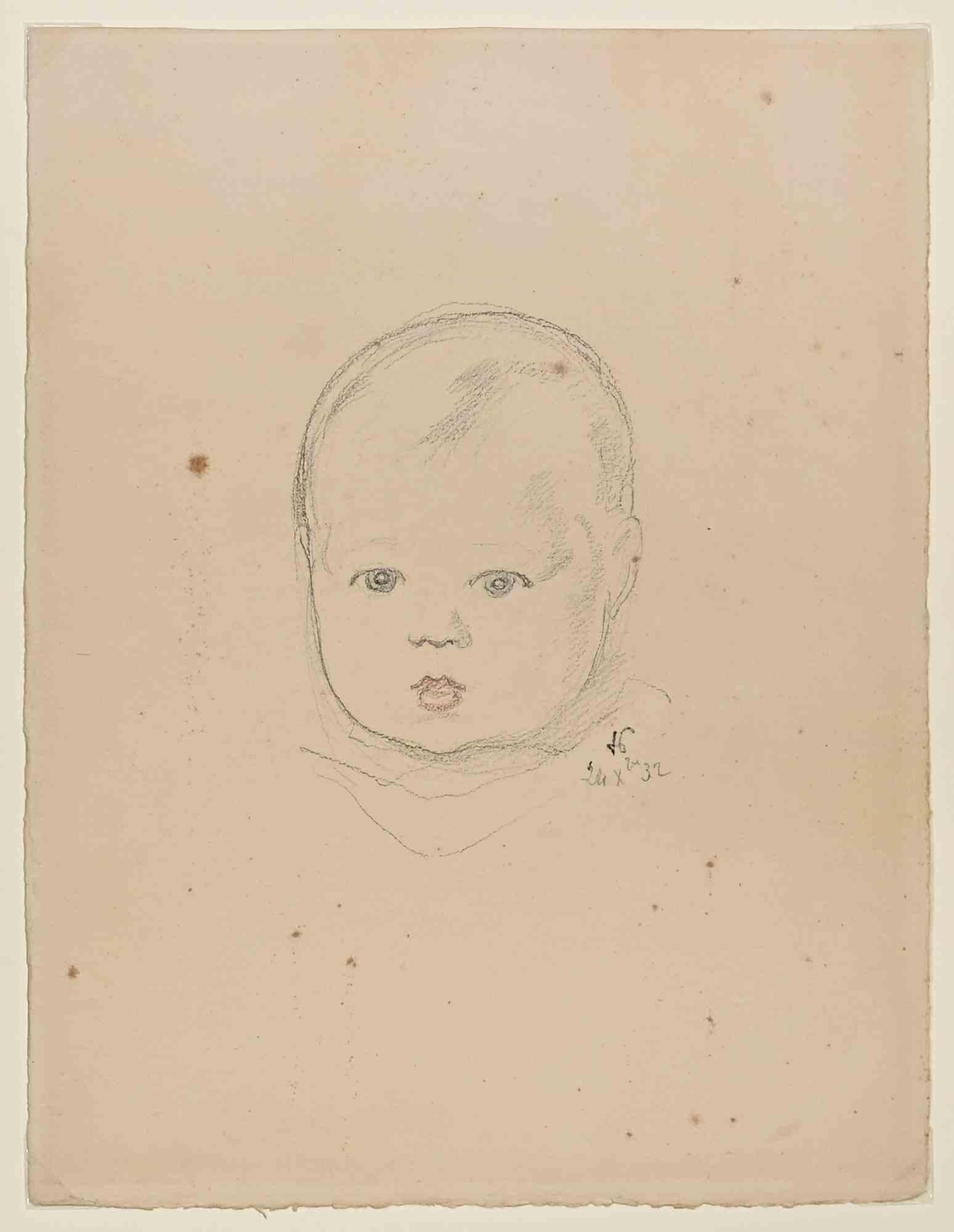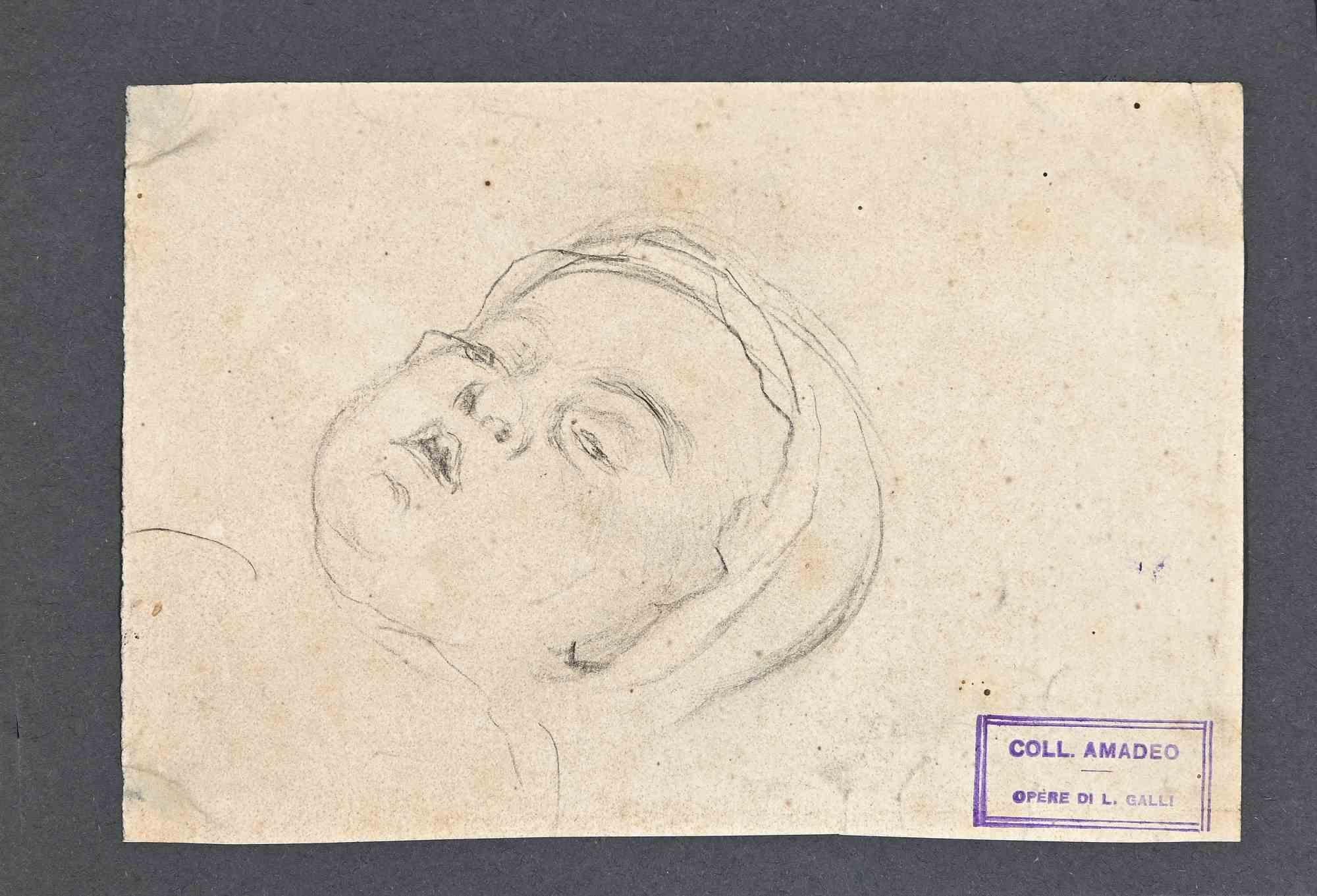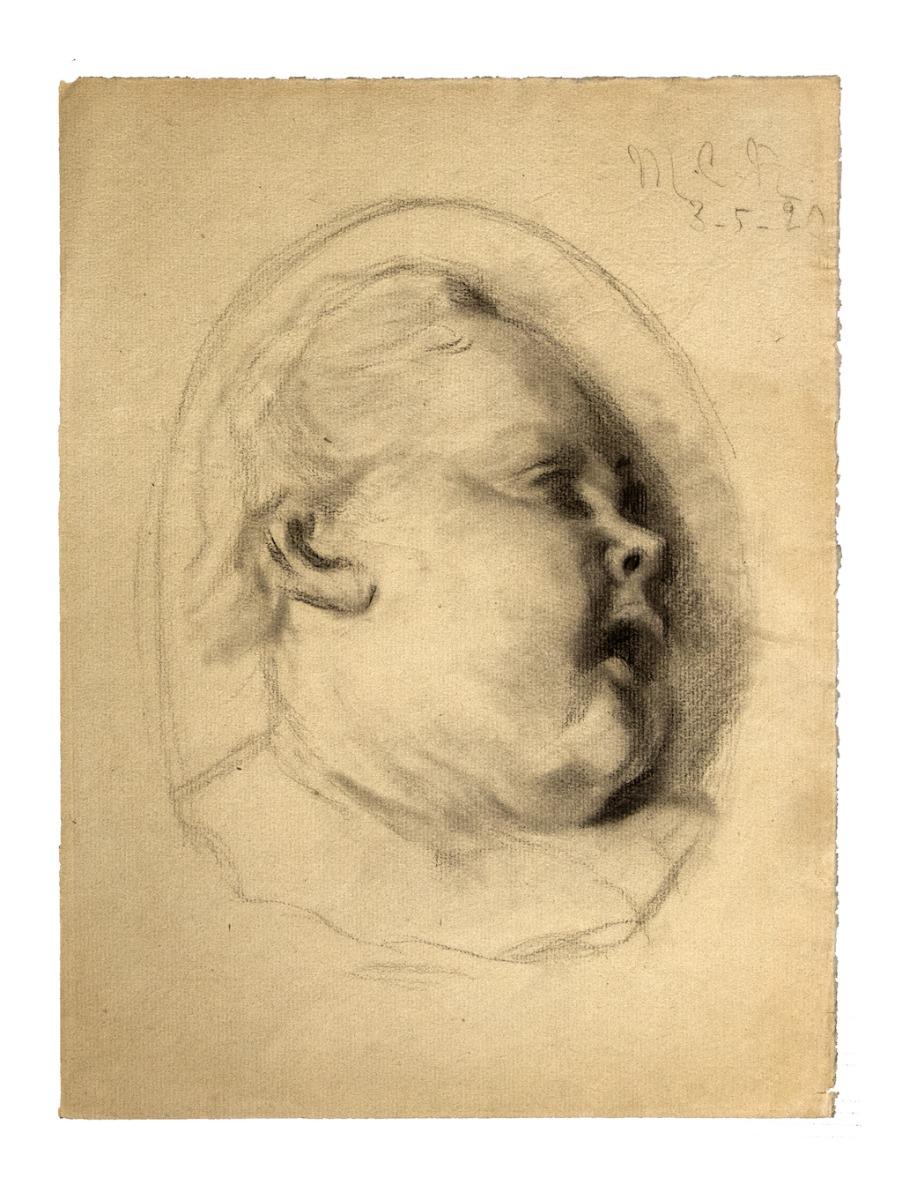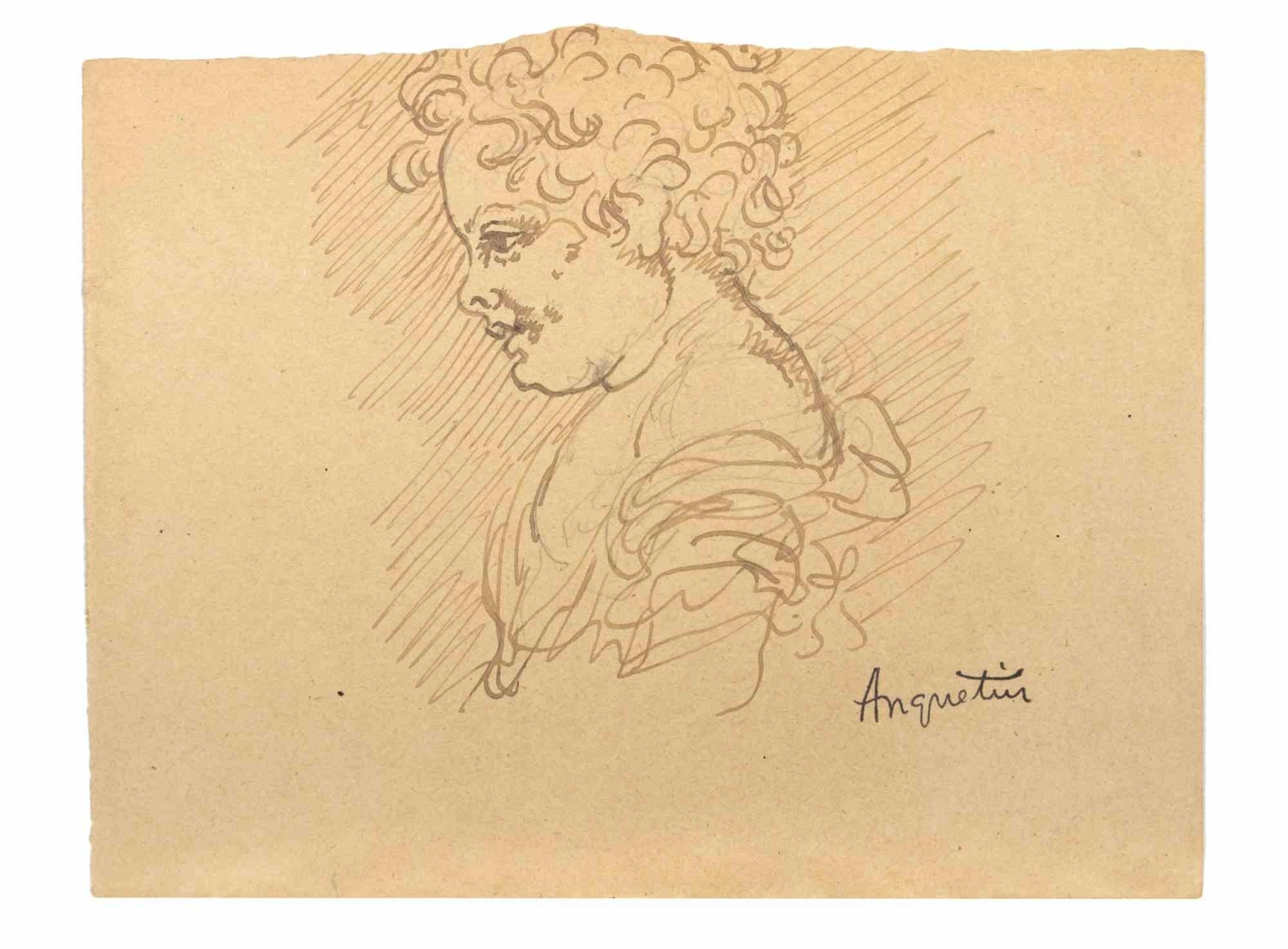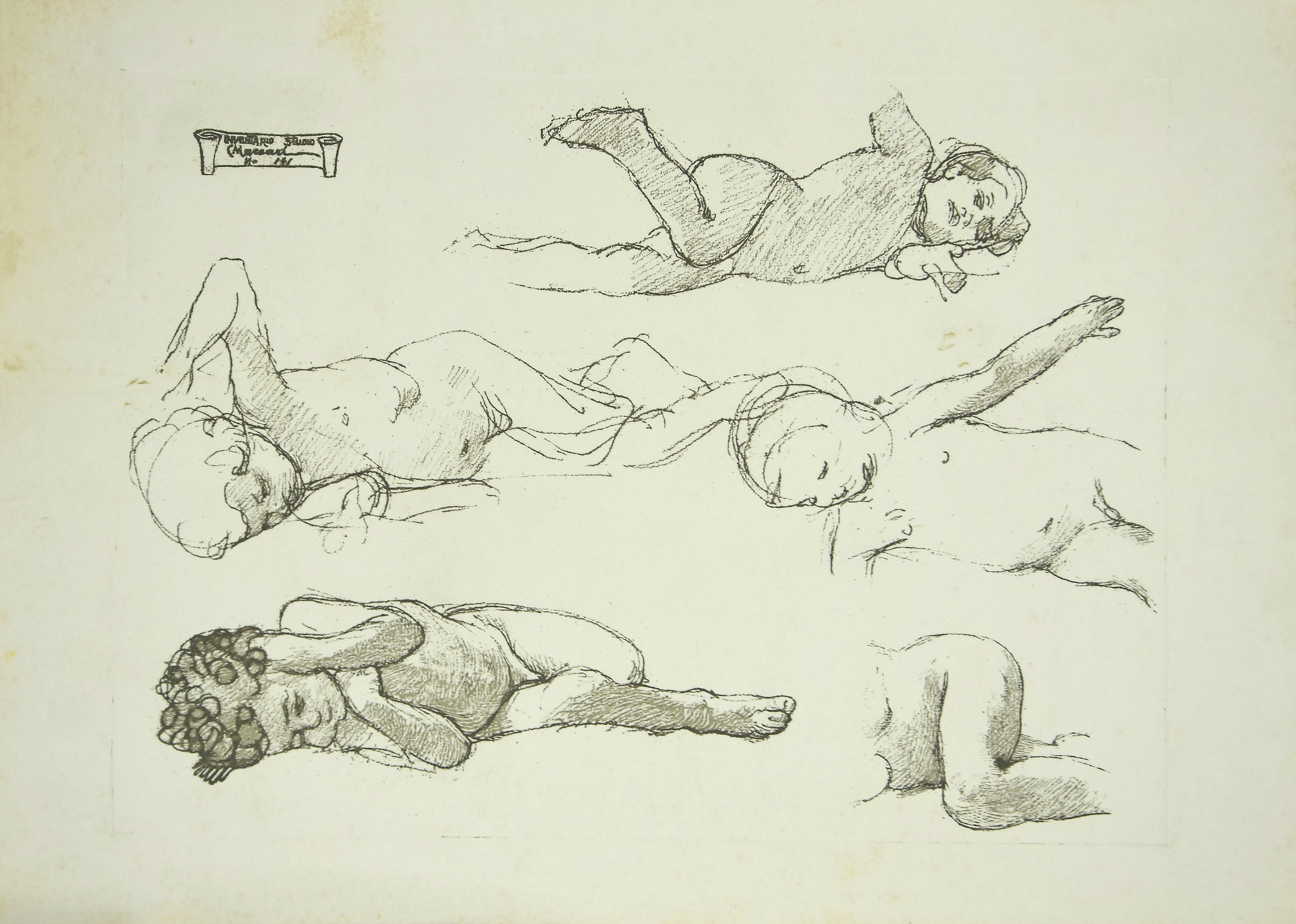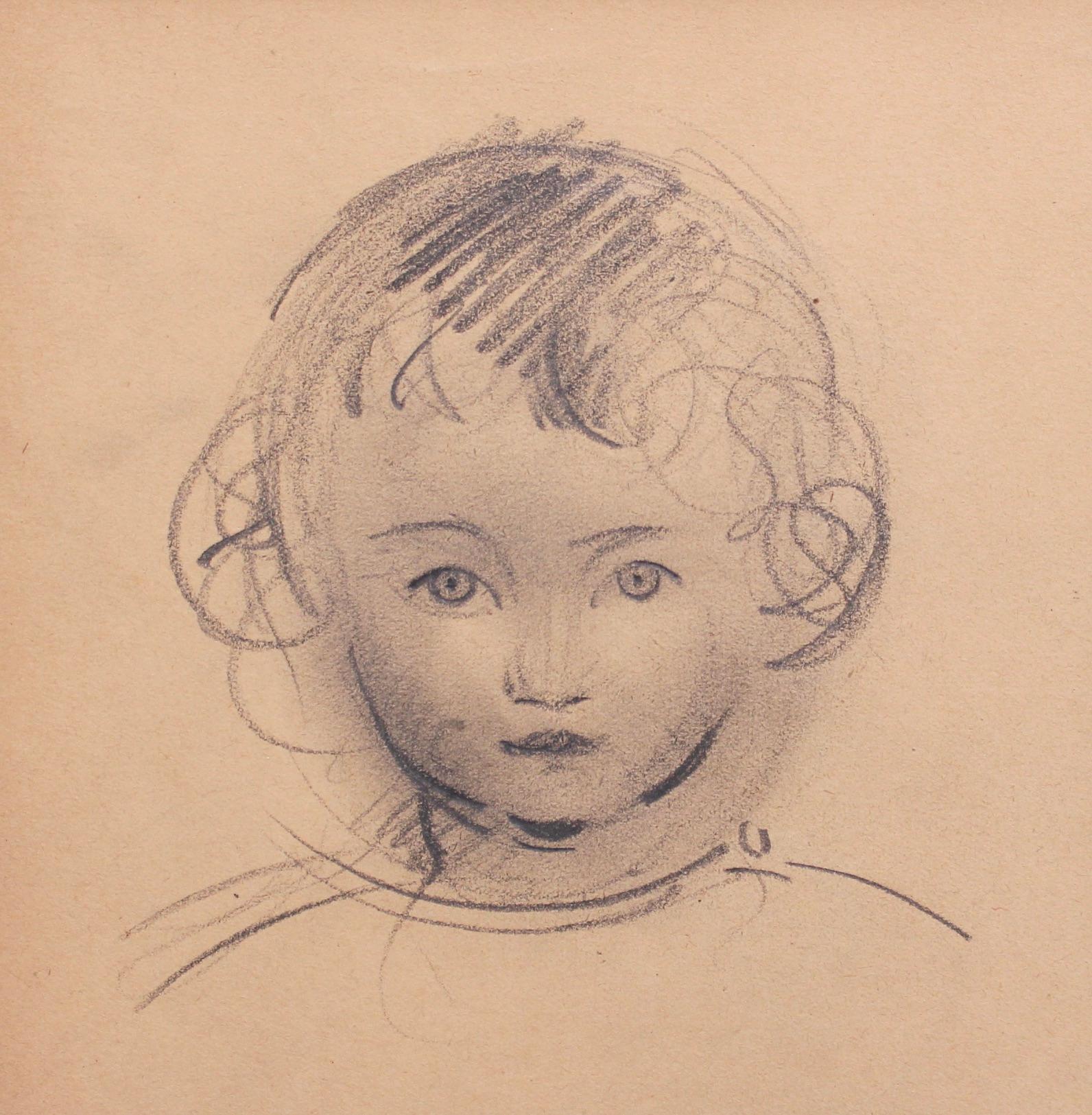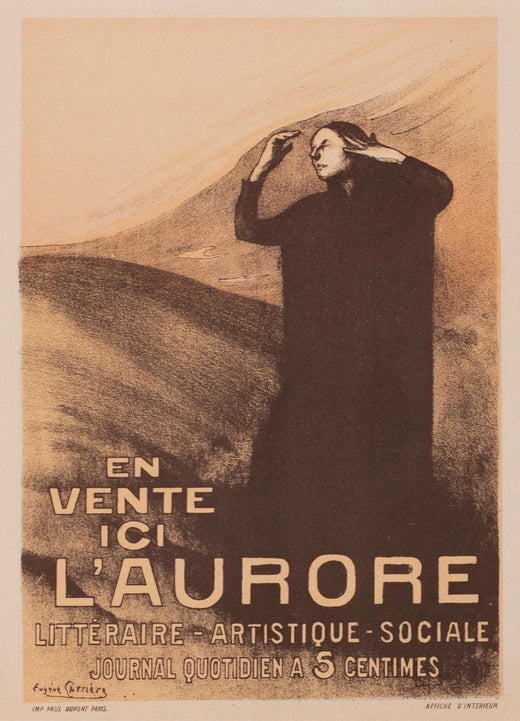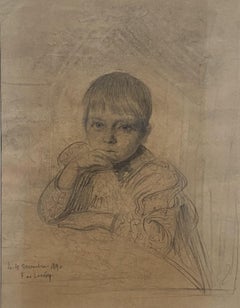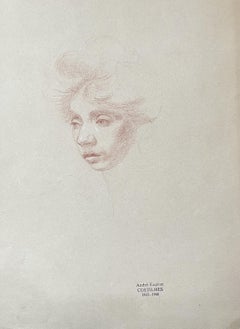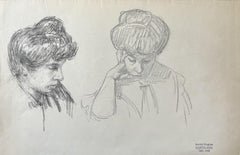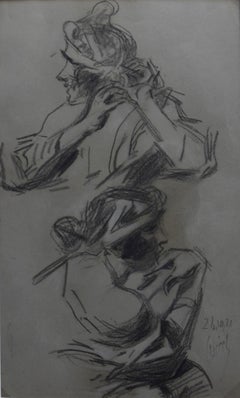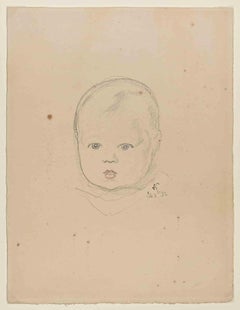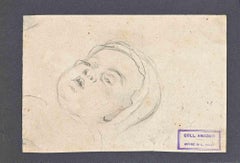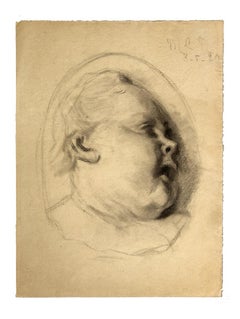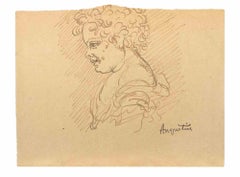Items Similar to Eugène Carrière (1849-1906) Studies of a baby's head, drawing signed
Video Loading
Want more images or videos?
Request additional images or videos from the seller
1 of 13
Eugène CarrièreEugène Carrière (1849-1906) Studies of a baby's head, drawing signed
$1,620.42
£1,201.92
€1,360
CA$2,218.89
A$2,466.99
CHF 1,291.32
MX$30,256.76
NOK 16,441.75
SEK 15,522.96
DKK 10,351.74
Shipping
Retrieving quote...The 1stDibs Promise:
Authenticity Guarantee,
Money-Back Guarantee,
24-Hour Cancellation
About the Item
Eugène Carrière (1849-1906)
Studies of a baby's head,
signed lower right
Pencil on paper
18.5 x 29.5 cm
In good condition, some stains in the lower right
Framed : 34 x 45 cm
This study of the head of a baby or very young child is particularly touching. Firstly because of its subject, of course, but above all because it allows us to see the artist at work, capturing his model from life and from different angles. In the end, he felt that this study was a work of art in itself, and he signed it to make it an artistic work in its own right.
It has all the stylistic characteristics of Eugène Carrière's highly recognisable art
Eugène Anatole Carrière (16 January 1849 – 27 March 1906) was a French Symbolist artist of the fin-de-siècle period. Carrière's paintings are best known for their near-monochrome brown palette and their ethereal, dreamlike quality. He was a close friend of Auguste Rodin and his work likely influenced Pablo Picasso's Blue Period. He was also associated with such writers as Paul Verlaine, Stéphane Mallarmé and Charles Morice.
The eighth of nine children of an insurance salesman, Carrière was born at Gournay-sur-Marne (Seine-Saint-Denis) and brought up in Strasbourg, where he received his initial training in art at the Ecole Municipale de Dessin as part of his apprenticeship in commercial lithography. In 1868, while briefly employed as a lithographer, he visited Paris and was so inspired by the paintings of Peter Paul Rubens in the Louvre that he resolved to become an artist. His studies under Alexandre Cabanel at the Ecole des Beaux-Arts were interrupted by the Franco–Prussian War, during which he was taken prisoner. In 1872 he worked in the studio of Jules Chéret. In 1878 he participated in the Salon for the first time, but his work went unnoticed. The following year he ended his studies under Cabanel, married Sophie Desmonceaux (with whom he would have seven children) and moved briefly to London where he saw and admired the works of J.M.W. Turner. Success eluded him for a number of years after he returned to Paris and he was forced to find occasional employment, usually with printers to support his growing family. Between 1880 and 1885 his brother Ernest (1858–1908), a ceramicist, arranged part-time work for him at the Sèvres porcelain factory. There he met Auguste Rodin who became and remained a very close friend.
At the Salon of 1884 one of Carrière’s paintings received an honourable mention, and the influential art critic Roger Marx became a champion of his work. Thereafter, Carrière found friends in most of the important artists, critics, writers and collectors of his time. He was a founding member of the Société Nationale des Beaux-Arts and of the Salon d’Automne (of which he was named honorary president). He played an influential role as an art teacher at Académie de La Palette and also exhibited with the Libre Esthétique in Brussels (in 1894, 1896 and 1899), the Munich Secession (in 1896, 1899, 1905 and 1906) and the Berlin Secession in 1904, with works including Sleep (1890), the celebrated portrait of Paul Verlaine (1891, Luxembourg), Maternity (1892, Luxembourg), Christ on the Cross (1897), and Madame Menard-Dorian (1906). Carrière died from throat cancer in 1906. The cultural world of Paris, from Georges Clemenceau to young artists such as Francis Picabia, was present at his funeral, where Rodin spoke of his "arresting ideas, expressed urgently and with a new clarity, undimmed by his suffering". Carrière's last words, recorded by his children, were: "Aimez-vous avec frénésie." ("Love each other wildly.")
The Société Nationale des Beaux-Arts and the Salon d’Automne in 1906, as well as the Ecole Nationale des Beaux-Arts and the Libre Esthétique in 1907, held major retrospective exhibitions of Carrière's work.
Carrière had great admiration for many of the Old Masters, but in his early work he was mainly influenced by his contemporary Jean-Jacques Henner. He increasingly used a near monochrome brown palette with occasional touches of other colours and a painterly technique somewhat like that of Henner, and by the mid-1880s his work was characterized by a dense, misty brown atmosphere out of which the images emerged.
The Sick Child (1885; Paris, Mus. d’Orsay) is an example of the theme of a mother and her child that Carrière often used and that has come to be regarded as typifying his work.
Carrière occupies an important place in fin-de-siècle Symbolism, which developed in the visual arts from the mid-1880s. The quality of poetic, dreamlike reverie that pervades his work particularly appealed to Symbolist critics such as Charles Morice and Jean Dolent; the latter described Carrière’s art as reality having the magic of dreams. Carrière also frequented the Café Voltaire and was involved in Symbolist theatre, bringing him into the mainstream of Symbolism. By employing a subdued palette, softening the focus and enveloping his figures in a thick, dark atmosphere, as in Maternity (c. 1889; Philadelphia, PA, Mus. A.), Carrière achieved a rarified sense of space, light and colour. His ethereal images have a quality of pervasive stillness.
Carrière’s strong belief in the essential brotherhood of Man led him to consider his family as a microcosm of mankind. Though most of his paintings are of family members or family relationships, his interest in the universal rather than the specific usually resulted in figures without much individuality presented in a formless environment. He also produced a number of portraits, with notable examples being that of the poet Paul Verlaine (1890; Paris, Mus. d’Orsay) and the sculptor Louis-Henri Devillez (1887).
Several of his works can be found at the Musée d'Orsay and the Musée Rodin in Paris, the Tate in London and the National Museum of Serbia in Belgrade.
- Creator:Eugène Carrière (1849 - 1906, French)
- Dimensions:Height: 7.29 in (18.5 cm)Width: 11.62 in (29.5 cm)
- Medium:
- Movement & Style:
- Period:
- Condition:
- Gallery Location:Paris, FR
- Reference Number:Seller: inv 7201stDibs: LU1112214487532
Eugène Carrière
Eugène Anatole Carrière (16 January 1849 – 27 March 1906) was a French Symbolist artist of the fin-de-siècle period. Carrière's paintings are best known for their near-monochrome brown palette and their ethereal, dreamlike quality. He was a close friend of Auguste Rodin and his work likely influenced Pablo Picasso's Blue Period. He was also associated with such writers as Paul Verlaine, Stéphane Mallarmé and Charles Morice. Carrière had great admiration for many of the Old Masters, but in his early work he was mainly influenced by his contemporary Jean-Jacques Henner. He increasingly used a near monochrome brown palette with occasional touches of other colours and a painterly technique somewhat like that of Henner, and by the mid-1880s his work was characterized by a dense, misty brown atmosphere out of which the images emerged.
The Sick Child (1885; Paris, Mus. d’Orsay) is an example of the theme of a mother and her child that Carrière often used and that has come to be regarded as typifying his work.
Carrière occupies an important place in fin-de-siècle Symbolism, which developed in the visual arts from the mid-1880s. The quality of poetic, dreamlike reverie that pervades his work particularly appealed to Symbolist critics such as Charles Morice and Jean Dolent; the latter described Carrière’s art as reality having the magic of dreams. Carrière also frequented the Café Voltaire and was involved in Symbolist theatre, bringing him into the mainstream of Symbolism. By employing a subdued palette, softening the focus and enveloping his figures in a thick, dark atmosphere, as in Maternity (c. 1889; Philadelphia, PA, Mus. A.), Carrière achieved a rarified sense of space, light and colour. His ethereal images have a quality of pervasive stillness.
Carrière’s strong belief in the essential brotherhood of Man led him to consider his family as a microcosm of mankind. Though most of his paintings are of family members or family relationships, his interest in the universal rather than the specific usually resulted in figures without much individuality presented in a formless environment. He also produced a number of portraits, with notable examples being that of the poet Paul Verlaine (1890; Paris, Mus. d’Orsay) and the sculptor Louis-Henri Devillez (1887). Several of his works can be found at the Musée d'Orsay and the Musée Rodin in Paris, the Tate in London and the National Museum of Serbia in Belgrade.
About the Seller
5.0
Gold Seller
Premium sellers maintaining a 4.3+ rating and 24-hour response times
Established in 2018
1stDibs seller since 2019
248 sales on 1stDibs
- ShippingRetrieving quote...Shipping from: Paris, France
- Return Policy
Authenticity Guarantee
In the unlikely event there’s an issue with an item’s authenticity, contact us within 1 year for a full refund. DetailsMoney-Back Guarantee
If your item is not as described, is damaged in transit, or does not arrive, contact us within 7 days for a full refund. Details24-Hour Cancellation
You have a 24-hour grace period in which to reconsider your purchase, with no questions asked.Vetted Professional Sellers
Our world-class sellers must adhere to strict standards for service and quality, maintaining the integrity of our listings.Price-Match Guarantee
If you find that a seller listed the same item for a lower price elsewhere, we’ll match it.Trusted Global Delivery
Our best-in-class carrier network provides specialized shipping options worldwide, including custom delivery.More From This Seller
View AllFernand de Launay (1855-1904) Portrait of a child, 1890, original drawing
By Fernand de Launay
Located in Paris, FR
Fernand de Launay (1838-1904)
Portrait of a child, probably the daughter of the artist
Lead pencil on paper
Signed and dated "4 septembre 1890" on the lower left
27 x 21 cm
In quite ...
Category
1890s Academic Portrait Drawings and Watercolors
Materials
Carbon Pencil
André Eugène Costilhes (1865-1940) Portrait of a lady, drawing
By André Eugène Costilhes
Located in Paris, FR
André Eugène Costilhes (1865-1940)
Portrait of a Lady
bears the stamp of the studio of André Eugène Costilhes in the lower right-hand corner
pencil red chalk and heightenings of whi...
Category
Early 1900s Symbolist Portrait Drawings and Watercolors
Materials
Pencil
André Eugène Costilhes (1865-1940) Two studies of women, drawing
By André Eugène Costilhes
Located in Paris, FR
André Eugène Costilhes (1865-1940)
Two studies of women
bears the stamp of the studio of André Eugène Costilhes in the lower right-hand corner
pencil on paper
23 x 36 cm
In good ...
Category
Early 1900s Symbolist Portrait Drawings and Watercolors
Materials
Pencil
Jules Cheret (1836-1932) Two studies of a woman, 1921 charcoal drawing, signed
By Jules Chéret
Located in Paris, FR
Jules Cheret (1836-1932)
Two studies of a woman, 1921
charcoal on grey paper
signed and dated 24 10 (19)21 on the bottom right
39.5 x 24 cm
A varnish stain in the lower middle of t...
Category
1920s Art Nouveau Figurative Drawings and Watercolors
Materials
Charcoal
Jules Cheret (1836-1932) Three studies of women, original signed drawing
By Jules Chéret
Located in Paris, FR
Jules Cheret (1836-1932)
Three studies of women
charcoal on paper
signed on the bottom left
39 x 24.5 cm
This drawing of studies was part of the artist's workshop as so it bears the...
Category
1910s Art Nouveau Figurative Drawings and Watercolors
Materials
Charcoal
Lucien Victor Guirand de Scevola (1871-1950) Portrait of a boy, signed pastel
By Lucien-Victor Guirand de Scévola
Located in Paris, FR
Lucien-Victor Guirand de Scevola (1871-1950)
Portrait of a boy
Signed lower left
Pastel on paper
28 x 23 cm
Framed : 63 x 58 cm
Guirand de Scévola is particularly renowned for hi...
Category
1930s Art Deco Portrait Drawings and Watercolors
Materials
Pastel
You May Also Like
Child - Drawing by Hermann Paul - Early 20th Century
Located in Roma, IT
Child is a pencil and pastel Drawing realized by Hermann Paul.
Dated "1916" on the lower right corner. Passpartout included cm 50x35
Good condition except some foxing .
René Georg...
Category
Early 20th Century Modern Figurative Drawings and Watercolors
Materials
Paper, Pastel, Pencil
The Baby - Drawing by Luigi Galli - Late 19th Century
Located in Roma, IT
The Baby is an original drawing in pencil, realized by Luigi Galli in the late 19th Century.
The status of preservation Good.
The artwork is depicted skillfully through confident a...
Category
Late 19th Century Modern Figurative Drawings and Watercolors
Materials
Pencil
Portrait - Original Pencil on Paper by Elizabeth de Noailles - Early20th Century
Located in Roma, IT
Portrait is an original drawing in pencil on paper realized by Anne-Elizabete de Noailles (1871-1933)
Good conditions, except for aged margins.
Included ...
Category
Early 20th Century Modern Figurative Drawings and Watercolors
Materials
Pencil
The Child Profile - Drawing by Louis Anquetin - Early 20th Century
By Louis Anquetin
Located in Roma, IT
The Child Profile is an ink drawing on paper realized in the early 20th Century by Louis Anquetin (1861-1932).
Hand-signed on the lower.
Good condition.
Louis Émile Anquetin (26 J...
Category
Early 20th Century Modern Figurative Drawings and Watercolors
Materials
Ink
Study of Baby - Original Lithograph after Cesare Maccari - Late 19th Century
Located in Roma, IT
Study of Baby is an original photo-lithograph print realized by Cesare Maccari.
Signed on the plate at the top, No. 141.
Very good conditions.
Included ...
Category
1980s Modern Figurative Prints
Materials
Lithograph
Portrait of a Young Child
By Guillaume Dulac
Located in London, GB
'Portrait of a Young Child', pencil on art paper, by French artist, Guillaume Dulac (circa 1920s). An artist known for his exquisite drawings - many are sketches for his larger oil p...
Category
1920s Portrait Drawings and Watercolors
Materials
Paper, Pencil
$605 Sale Price
20% Off
More Ways To Browse
Antique Study Drawing
Masters Drawings Signed
Theatre Drawings
1849 Painting
Mother Child Drawing
Picasso Blue Period
Old Master Pencil Drawing
Mother And Baby Art
J A Turner
1889 Portrait Drawing
Head Of Christ
Old Master Mother Child
Baby Dior
J M W Turner Paintings
Mother Baby Painting
1887 Porcelain
Porcelain Baby
Antique Paintings Peter Paul Rubens
